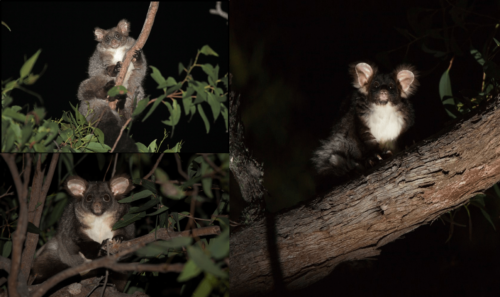
THE number of greater glider species in Australia has tripled after researchers discovered that the possum-sized marsupial is actually three different species.
After analysing the genetic make-up of the vulnerable marsupial, which exclusively feeds on eucalyptus and can glide as far as 100m, a team of researchers from James Cook University, ANU, the University of Canberra and CSIRO confirmed the long-held theory that the greater glider is actually multiple species.
“There has been speculation for a while that there was more than one species of greater glider, but now we have proof from the DNA. It changes the whole way we think about them,” said James Cook University’s Denise McGregor, who, as part of her PhD project to understand why greater gliders varied so much across their range, discovered that the genetic differences between the populations she was looking at were profound.
Prof Krockenberger, who was part of the research team from James Cook University, said this discover means Australia’s biodiversity just got a lot richer.
“It’s not every day that new mammals are confirmed, let alone two new mammals,” she said.
“Differences in size and physiology gave us hints that the one accepted species was actually three. For the first time, we were able to use Diversity Arrays (DArT) sequencing to provide genetic support for multiple species.
The sequencing showed that greater gliders, much larger than the more well-known sugar gliders, eat only eucalyptus leaves and live in forests along the Great Dividing Range from northern QLD to southern Victoria. Once common, they are now listed as “vulnerable”, with their numbers declining, say the researchers.
Being able to correctly identify animal species is critical to conservation efforts, said ANU researcher Dr Kara Youngentob, who co-authored the report.
“This year Australia experienced a bushfire season of unprecedented severity, resulting in widespread habitat loss and mortality. As a result, there’s been an increased focus on understanding genetic diversity and structure of species to protect resilience in the face of climate change,” said Dr Youngentob.
“The division of the greater glider into multiple species reduces the previous widespread distribution of the original species, further increasing conservation concern for that animal and highlighting the lack of information about the other greater glider species.”
Who can be trusted?
In a world of spin and confusion, there’s never been a more important time to support independent journalism in Canberra.
If you trust our work online and want to enforce the power of independent voices, I invite you to make a small contribution.
Every dollar of support is invested back into our journalism to help keep citynews.com.au strong and free.
Thank you,
Ian Meikle, editor





Leave a Reply